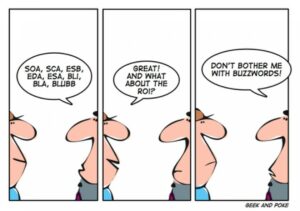 LinkedIn is a significant social media presence that a lot of people (me included) use just about every single day. That makes LinkedIn pretty important.
LinkedIn is a significant social media presence that a lot of people (me included) use just about every single day. That makes LinkedIn pretty important.
That’s the information that just about any executive, recruiter, talent manager, sourcer, or talent acquisition professional would love to get their hands on.
Yes, just about everyone is open to a new opportunity
Here are the four (4) key findings from the report’s Executive Summary, the place in just about any survey where they cut to the chase and get to what you REALLY want to know: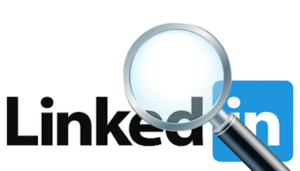
- Just about everyone is open to new job opportunities — “A massive 90 percent of global professionals are interested in hearing about new job opportunities.”
- But here’s the problem: People don’t know about your company or your jobs — “Candidates’ biggest obstacle when changing jobs is not knowing enough about your company or roles.“
- If you have the right message, you gotta share it the right way — “(Some) 66 percent of people who recently changed jobs are aware of the company by the time they first hear about the job. The No. 1 way candidates first discover and land a new job is through an employee referral.”
- People (Millennial perhaps?) don’t see themselves staying at one company long — “Over 2 in 5 people see themselves at their current company for less than two years. Recruit those who are likely to stay by looking for candidates who are motivated by purpose rather than status or money.”
That’s just the tip of the iceberg, because there great information in this report. It’s free if you just fill out this form.
The biggest roadblocks when changing jobs
There was a lot more information in the Global Talent Trends survey, and much of it was interesting t me and may also be interesting to you:
Although most survey respondents consider themselves passive job seekers, the number of active candidates continues to increase. According to the LinkedIn survey, the percentage of active candidates jumped from 25 percent in 2014 to 30 percent in 2015 to 36 percent in 2016.
My take: More and more professionals are ready to reach out and start looking for a new job as wage growth continues to be stagnant at so many companies.
Here are the biggest roadblocks candidates face when changing jobs:
- Not knowing what it’s like to really work at the company;
- Not understanding what’s expected;
- Not hearing back after applying to a company (this is one of my all-time pet peeves);
- Difficultly negotiating things like salary, title, role, etc.
- Unclear communication during the recruiting process.
There are a lot of things candidates REALLY want to know about your company. Believe it or not, culture and values topped this list at 66 percent, followed by perks and benefits at 54 percent, and mission and vision at 50 percent.
My take: As Millennials and younger workers become the largest part of the workforce, things that really matter to them — like mission, vision, culture, and values — will grow in importance. If your company isn’t on top of these things, recruiting will suffer and your organization is going to fall behind.
The key from LinkedIn’s survey: A relevant recruiting strategy
 There’s a lot more to LinkedIn’s Global Talent Trends survey, but the big thing thing you need to keep in mind is that the respondents to it are working professionals with a profile on LinkedIn.
There’s a lot more to LinkedIn’s Global Talent Trends survey, but the big thing thing you need to keep in mind is that the respondents to it are working professionals with a profile on LinkedIn.
In my book, that’s a pretty good group to be sampling, but it may not be representative of what you and your company is looking for.
One more thought: Just about every survey and research report these days has something that tells you how much the demographics of the workplace are rapidly and dramatically changing. If you are not taking the time to sharpen your recruitment and retention strategy by continually updating it every year, you’re going to find your ability to compete for the best talent falling further behind.
In other words, just about everybody is looking to innovate when it comes to recruiting. You need to be, too.
LinkedIn surveyed 26,151 LinkedIn members worldwide between January and March 2016. The majority were employed full-time or part-time when they took the survey. The survey was offered in multiple languages without incentives and LinkedIn did not weight the data. In addition, thy also surveyed 6,745 LinkedIn member globally who changed companies between February and March 2016 as self-reported in their profiles and confirmed in the survey. The overall confidence level for this survey is between 90-95 percent.
Talent Connect 2017: RecruitingLive w/ Angie Verros
According to their website, “Talent Connect is a three-day immersive event that will transform the way you think about talent.” It’s hard to believe that there could possibly be MORE to learn about talent – especially for those of us that have been in the game a while. But if we’ve met, you know that I love to learn (and teach) so for me there’s ALWAYS something new to uncover. Now I know, it may seem odd that an event claims to change the way that you think – but why else would you attend something in the first place if not to try something different in the hopes of, well, change?
This Friday we’ll be sitting down and digging in to Talent Connect 2017. The focus at this years event is on insights – and we figured Angie Verros would be the best person to share some of HER insights!
The event has several tracks listed and we’ll be sure to cover as many as we can. Be sure to bring your questions and follow along online #rdaily!
“Declined Offer” Interviews? Don’t Expect Much From Someone Rejecting a Job
 In a workplace world where we conduct job interviews, exit interviews, and sometimes even “stay” interviews, it’s not surprising that there’s been a push for “declined offer” interviews.
In a workplace world where we conduct job interviews, exit interviews, and sometimes even “stay” interviews, it’s not surprising that there’s been a push for “declined offer” interviews.
Yes, somebody thinks it makes sense for organizations to interview people who turn down a job.
The Harvard Business Review weighed in on this topic, calling them “declined offer” interviews, and their story added this insight:
Like “exit interviews” these “declined offer” interviews can yield a lot of information about your own organization as well as valuable data about your industry and competitors.”
Will “declined offer” interviews really yield much?
Well, “declined offer” interviews would probably yield a great deal — IF you can actually get someone who declined your job offer to respond, AND be candid and open.
That’s where the trouble starts.
Getting people to be open in an interview is a difficult proposition, particularly a personal interview, and it’s even tougher if they don’t have something at stake.
For example, in a job interview where someone has a vested interest in the process — they want to land the job — it’s generally good to be frank and open because job candidates who are engaged are more likely to be hired. But as all too many talent acquisition professionals know, even that powerful incentive isn’t always a guarantee that the person being interviewed will be completely open with you.
For example, consider another debatable workplace discussion where the interviewee has very little to gain — the infamous exit interview.
This “conversation” with a departing employee, where the company wants insights about the company from the person who is leaving, is pretty worthless in my experience, because generations of employees have been told that the smart play is to keep your mouth shut when leaving and say as little as possible.
 The logic is hard to argue — you simply don’t want to burn your bridges with the soon-to-be former employer.
The logic is hard to argue — you simply don’t want to burn your bridges with the soon-to-be former employer.
It’s never good to bad mouth an employer, and it’s simply not a Phi Beta Kappa move because you may need them at some point — in case you decide to return as a “boomerang” employee, for example, or possibly for a job or credit reference.
This was drilled into my head by a couple of co-workers as I was getting ready to leave my very first professional job, and over the years I’ve found that most departing employees say very little except broad platitudes that yield little insight and defeat the whole purpose of the exit interview anyway.
“Stay” interviews have the greatest potential for the employee to be open and frank, but sadly, too few organizations actually do them. They’re a great technique, but few companies are forward-thinking enough to anticipate issues that employees might be having that could cause them to leave, and, that they really want to talk about before they decide to resign.
Most useful info from “declined offer” interviews
So, back to the notion of a “declined offer” interview — what are we really going to get from them, assuming we can actually get somebody who turned down a job to respond? Here’s what HBR says:
The feedback that is most likely to be useful and within the company’s control is also likely to be the most sensitive and difficult for the candidate to feel comfortable sharing.
It might be hard for a candidate to openly tell a hiring manager or a human resources business partner that she thought the hiring manager was unfriendly or unfocused, that some interviewers conveyed a low-level of enthusiasm about working at the organization, that there were too many interviewers in the mix, or that different interviewers seemed to convey divergent ideas about the company’s strategy and plans, the level of authority or responsibilities in the role, the key challenges of the role, or what would be necessary for success.
Therefore, it’s helpful to collect feedback via a third-party such as an external search, consulting or research firm; an internal market research, branding or analytics department that is outside of both the hiring area and human resources; and/or anonymously through web surveys or via email. By sharing feedback with a third-party outside of the hiring process or via an anonymous technology platform, candidates can be sufficiently candid and specific about their experiences and suggestions without having concerns about burning any bridges.”
An impractical, pie-in-the-sky fad
 Let me put that in simpler language: the information that companies would want most from people who decline their job offers is the hardest to get — and that’s why you need a third-party to gather that.
Let me put that in simpler language: the information that companies would want most from people who decline their job offers is the hardest to get — and that’s why you need a third-party to gather that.
A system like that would be the only way that a “declined offer” interview would work, and even HBR acknowledges how important it is to “ensure that the process is not too time consuming or burdensome for either the candidate or the organization.”
In other words, this is a good idea but really hard to do.
Count me as skeptical that very many people turning down for jobs would be willing to take the time to chat much about why they turned you down.
It’s a pie-in-the-sky idea that isn’t terribly practical and doesn’t take into account how unwilling people today would be to fill out yet ANOTHER survey or have ANOTHER conversation.
I don’t know how many organizations are doing “declined offer” interviews, but even one is too many. This is a silly recruiting “fad,” nothing more.
Keep Your Professional Relationships Personal With Cohort
It is ironic that the current trend is to use technology to form better business relationships. Moreover, in some respects, it has. However, more often than not, people just collect ‘Connections’ rather than form real relationships. But even though you have hundreds, or thousands, of connections and followers the odds are that you actually speak with very few. Just as there are great candidates stuck in Applicant Tracking Systems across America, you have valuable connections in LinkedIn that you may have never spoken with.
On the flip side, there are other connections that started as a business relationship but have morphed into a friendship. People you trust; those that when you have a work issue to turn to for advice. Those who are willing to help you succeed and you would do the same for them. And they know people that would be willing to help them help you. And that is whom Cohort wants to help you find; people you need that are connected to the people you already know and trust, ‘your cohort.’
Professional Networking
Cohort is a simple mobile app that connects with Twitter. It then goes through your followers and asks ‘who can you ask a favor of.’ once selected, cohort analyzes the public data of your network to detect their interests and expertise.
Cohort Founder Eamon Leonard built this tool out of necessity after being constantly asked for introductions to people in his network. Leonard said,
“LinkedIn has dominated ‘professional networking’ but lost interested leveraging deeper relationships and social capital to realize the potential in your network.”
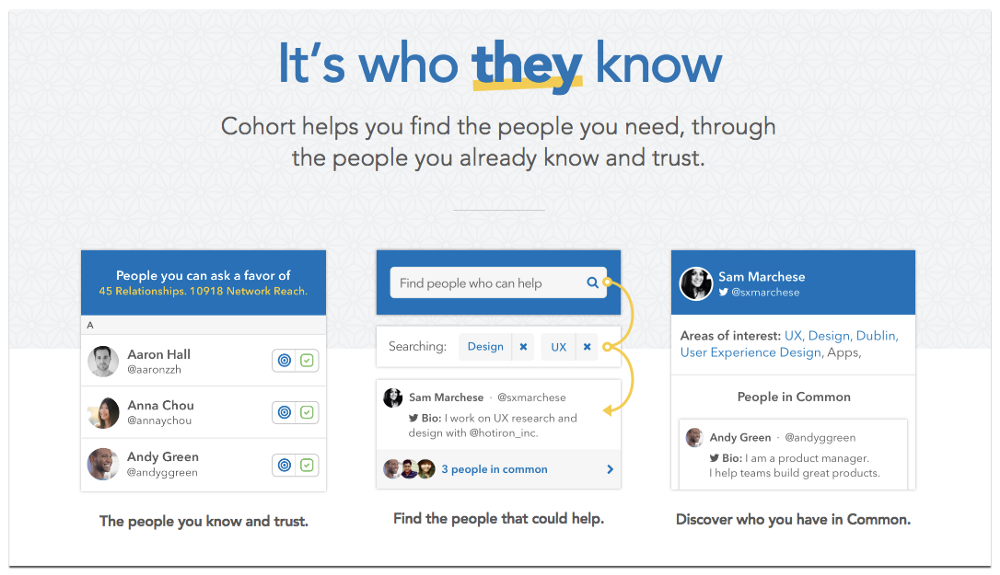
Now Tell Me, What You Want, What You Really, Really Want.
What makes Cohort great is that once you decide which ‘connections’ you have a real connection with, you can leverage those relationships to get referrals for potential candidates. Here is an example:
The downside from the app perspective is that if the person you would like to network with is not on the Cohort app, you will not be able to see their complete profile. But of course, if the person you are asking to help is a true connection, they would share all of the info they can as well as make an introduction.
By using Cohort, not only can you build on your real business relationships, you can find the candidates that you are looking for as well. To be a top recruiter, you must stop collecting ‘connections’ and start making them through people that you already trust.
Inbound Recruiting: Getting Closer to Candidates You’d REALLY Like to Hire
 Everywhere you go, people are talking about how hard it is to recruit talent. In an economy where the unemployment rate is below 5 percent, companies across the country are beginning to struggle with attracting quality talent.
Everywhere you go, people are talking about how hard it is to recruit talent. In an economy where the unemployment rate is below 5 percent, companies across the country are beginning to struggle with attracting quality talent.
Enter Inbound Recruiting
Inbound recruiting is taken directly from the methods and philosophies behind inbound marketing, which is focused around attracting customers through helpful content and interactions that build a relationship over time.
Similarly, inbound recruiting is all about sharing relevant information with candidates as a means to build awareness and attraction with the people you’d like to hire.
And, while inbound marketing arose as a means for companies to differentiate themselves against the disruptive and many times unwanted, cold outreach of sales people, inbound recruiting is similarly rising as a response to the decreasing returns of cold outreach to candidates.
The best talent is now bombarded on a regular basis by various recruiters asking for 15 minutes so that they can sell them on a job they aren’t looking for. Companies need to start thinking differently about how they get in front of candidates and pull their attention in through unique content.
Look in the mirror
The first step to building a strong employer brand, improve your inbound recruiting, and drive more quality inbound candidates, is to take a realistic look at your organization and why people work there.
Who better to answer that question than your employees? They are trusted by job seekers, and, they also have all of the in depth content that candidates are looking for.
While HR knows what the sales function is up to, they don’t necessarily know how account executives celebrate the wins, or the career path for a sales development rep. These details are so terribly important to communicate!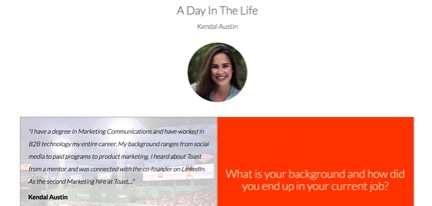
Asking your employees to share the in depth and authentic stories behind working at your company is also a great way to scale your efforts.
Imagine getting five of your account reps to share 10 stories about working at your company? That’s 50 pieces of content about working as an account rep at your company! Now, let’s do that for engineering, marketing, veterans, etc.
To edit … or not to edit
Most companies fall down when they manicure the responses of their employees down to something akin to “We’re an innovative and diverse company!”
Realistically, we all know an advertisement when we see one. And we want to be shown, not told, how you’re innovative.
For the most part, the unedited voices of your employees are by far the most effective means to engage candidates with themes they’ll care about — how your company develops people, the key aspects of your employee value propositions, your organizational culture, etc.
This can be a scary thought in the days of employer review sites. But, you will be surprised what your employees say when you give them the floor. Trust us on this.
Inbound recruiting happens online
The majority of the candidate journey happens online. People read a press release and go to your careers page. Or, they hear about a job opening they may like and check out your social media.
To be an employer of choice, you need to have a career page that engages and converts visitors into candidates. Landing pages that dive into each role at your company are key.
Engineers want to hear about working as an engineer, and job descriptions just don’t cut it. Toast even has a Spotify playlist embedded in the career site – it’s just another way to share the organization’s culture.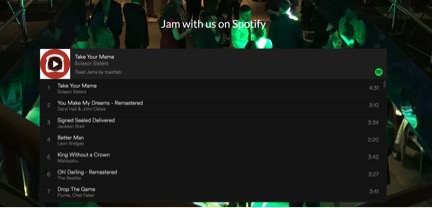
Another key to inbound marketing is the idea of nurturing leads over time with interesting content. Inbound recruiting mandates the same. Give your passive candidates a way to keep in touch with your company through talent communities they can sign up for.
Remember: You shouldn’t need to apply for a job just to stay in touch with a company you’re interested in.
Be careful not to simply blast passive candidates with jobs. Send interesting information each month about your culture, new office opening, latest meet-up, etc. The last piece of advice here is to segment: Again, engineers want to hear about the engineering culture, sales candidates want to hear about sales, etc.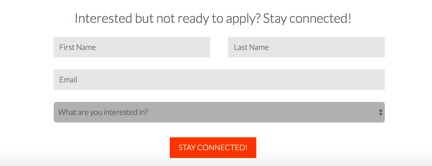
It’s offline, too
Don’t underestimate the power of engaging people offline. This could mean career fairs. More than that, it’s about hosting meet-ups that talk through hard challenges your engineers have tackled, or how your sales team is using the Sandler method. Lastly, have a presence at events where your talent pools are hanging out – whether that’s a python hackathon or a craft beer festival.
If you have the opportunity, start to speak on panels and build your own personal content. Becoming part of the broader community as a thought leader means that your personal and talent brand become an employer of choice – making recruiting that much easier.
Where to get started
We all know that recruiting is like marketing, but many times recruiters aren’t marketers. Imagine asking your engineering lead to write copy for your product page; it probably wouldn’t be that great
Find the right internal or external partners to help build out an employer branding strategy that is executable and measurable. Start with one project — your careers site, an Instagram hashtag, talent communities, etc — and go from there.
Good luck!
How to Hire the Right Person, FAST
In the field of recruitment, there’s a popular adage that says, “finding the right hire takes time.” While hiring should never be rushed, finding the right candidate doesn’t have to be a lengthy process. By taking proactive measures to attract the right job seekers to your job posting, you can quickly find the perfect addition to your growing team. ZipRecruiter, a leading job site, uses a powerful matching algorithm and other time-saving tools to make your hiring more efficient and effective.
Write a Great Job Post
Enticing the right talent to apply for your open position starts with creating a stellar job listing. The title of the listing should be short and straightforward, and you should choose words for the title that describe the role in clear terms. ZipRecruiter offers title suggestions when you build your job ad, so it’s easy to select the most clickable title.
When writing the description, it’s important to steer away from recycling an out-of-date listing that may include misleading details. Revisit the listed responsibilities and make sure they accurately reflect the daily tasks associated with the position. ZipRecruiter makes it easy to create new, optimized job descriptions by offering dozens of free job description templates designed to target qualified job seekers.
Reach Candidates on All the Top Job Sites
Whether you’re an employer in a niche industry or simply seek to reach candidates through a variety of channels, optimize your odds of getting your job listing in front of the right job seekers with ZipRecruiter. Upload your job listing once to ZipRecruiter and have it instantly distributed to 100+ leading job boards. ZipRecruiter even uploads your job listing to social media sites, like Facebook and LinkedIn, that top job seekers visit every day. Since ZipRecruiter does the work of distributing your job post for you, you’ll start receiving applicants from diverse channels faster, and have more time to focus on reviewing resumes and finding the best candidates.
Stay Organized
Keeping organized is key to quickly sorting through an influx of resumes and identifying the strongest applicants. ZipRecruiter inputs all applications into a simple, intuitive dashboard where you can review and rate resumes. You can even add screening questions to your job listing that all candidates must answer before submitting their application, so you only see people with the right experience. Once you identify the people you’d like to interview, use the ZipRecruiter messaging tool to schedule time to speak with top candidates.
Make the Most of In-Person Interviews
If you’re seeking to hire a new employee fast, you likely won’t have time to conduct multiple in-person interviews with each candidate. To make the most of one in-person interview, put job seekers in a strong position to make a good impression. Ask interviewees to come to your office prepared with questions to ask and printed copies of their resumes and any other materials you will need to make your hiring decision. Invite expert members of your staff to join you in the interview, who can quiz each applicant on pertinent topics that you may not be familiar with.
Try ZipRecruiter for yourself to find your next great hire, fast. Sign up for a free trial today!
Editor’s Note: This post was sponsored by our friends at ZipRecruiter. You probably figured that out by now.
Why Don’t Companies Value Internal Recruitment? It’s Their FOMO
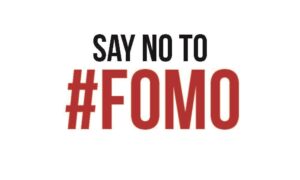 Internal recruitment — essentially, promoting, advancing, and hiring from within — seems like a pretty fraught concept at a lot of companies.
Internal recruitment — essentially, promoting, advancing, and hiring from within — seems like a pretty fraught concept at a lot of companies.
The big thing here is FOMO, or fear of missing out. It’s kind of the same logic behind why companies hire consultants.
The idea is that “fresh blood” is good, that these people will have new ideas. They might even be poached from a competitor, so that gives you a leg up on the enemy.
I also think a lot of executives know (but won’t admit) that people start to get burned out and recycle the same 3-5 ideas once they’ve worked somewhere a few years, so an infusion of new human capital could be a good thing. All this has some validity, although it’s also a bit wrong. More on the FOMO part later.
On surveys, employees often talk about wanting “opportunities for growth.” That usually means “a higher salary,” if we’re being 100 percent honest.
One of the most demoralizing things ever is working for a place with poor internal recruitment. In that type of setting, you hit target after target for a boss man — and then when you’re up for a promotion, it goes to someone they found on LinkedIn.
After that happens 2-3 times, why would you care about your job anymore? Clearly, there’s no chance for growth. This is the dangerous side of the career ladder.
I can think of about 127 ways that internal recruitment makes sense and adds value, but let’s start with six (6).
Internal Recruitment Value No. 1: The FOMO Case
The most common use of “FOMO” is probably with social media. But let me be upfront here: Most of social media is simply curated horse crap.
Let’s say you see a picture of a beautiful family of four and a dog, OK? You look at that picture and say, “Their life is going well.” Really, you have no idea what their life is like, because 13 seconds before that picture was taken, they could have been in a huge fight. You simply don’t know.
Social media is a series of snapshots in time, on steroids. You see pictures from a party. It looks fun. But … FOMO! The party could have sucked. You have no clue. It’s a moment in time meant to convey something, and it’s not necessarily real.
 That’s the same problem with FOMO-driven hiring, or the opposite of internal recruitment. “Look at that guy killing it at our competitor,” an exec bellows. “Let’s get him.” That guy could sink your sales culture in 5.8 seconds flat because once he’s hired, he’ll alienate every single other person you already have.
That’s the same problem with FOMO-driven hiring, or the opposite of internal recruitment. “Look at that guy killing it at our competitor,” an exec bellows. “Let’s get him.” That guy could sink your sales culture in 5.8 seconds flat because once he’s hired, he’ll alienate every single other person you already have.
Look, you will absolutely never know how a person fits in your culture until he or she works with you. And because “sample days on the job” aren’t commonly part of the hiring process, everything’s really just a guess. Why not reduce the guess (and increase your odds) by using someone who already works for you?
Remember: You have a read on how they relate to your culture. With FOMO hiring, you do not.
Internal Recruitment Value No. 2: Your hiring process is a mess anyway
Your hiring process probably is not great. It’s likely set up in a way that alienates the best candidates.
So why rely on that when you can rely on internal knowledge you already possess on people who already understand how your systems work?
Internal Recruitment Value No. 3: It makes people feel good
This is a fluffy reason, sure, and I can imagine some executive screeching “The point ain’t to feel good, the point is to rake in the cash!”
OK; maybe that’s true. Here’s the funny part, though — almost every executive is absolutely terrified of being seen as incompetent. They have a good deal in that most of them can be force-fed competence via hierarchy. “I wouldn’t have known how to do that without you, boss!”
Executives want to feel good, too. They want people to say “You’re worthwhile” and “You’re relevant” and “You’re on the right track.” We’re all human beings and we all want that.
It’s demoralizing to toil 10 years in at a place and be making only $3,000 more than you did a decade ago. Then some manager is telling you 24 different things are a priority, but if you bring up promotions, he says “We don’t have the resources right now, Robert.” Meanwhile, he just bought a f***ing Mercedes.
We all know the game. Internal recruitment can help people feel a little bit better about it.
Internal Recruitment Value No. 4: You chasing process?
Most companies drown absolutely everything in process to the point that the process means more than results do. If you work at that type of place, you need to prioritize internal recruitment.
It’s simple math.
A new hire from the outside will take at least a month to learn all the processes, and honestly, it’s usually longer. I’ve worked with people who came into a company at a high level and it took 9-12 months for them to figure out WTF was happening.
That’s a year. If you’re big on quarters, that’s four quarters. Other higher-ups will grouse about that person within maybe 3-4 weeks. This happens all the time.
If you value process, why wouldn’t you use internal recruitment to advance someone who already understands the processes?
Internal Recruitment Value No. 5: It’s motivational
 My last gig was with a B2B travel consortium. Last summer, I had a few beers after work with the CFO. This place had a huge degree of homophily — people working together for years — which is both a good and a bad thing.
My last gig was with a B2B travel consortium. Last summer, I had a few beers after work with the CFO. This place had a huge degree of homophily — people working together for years — which is both a good and a bad thing.
Here’s the good: That feels like family. But the bad? New ideas always seen as a threat, as in, “Well, this is the way we’ve always done it.”
So, I’m talking with the CFO and he admits this stunning fact — despite all the stick-around culture, only two people (maybe three) had ever reached the top rungs at this company via internal recruitment. Almost every Senior VP and higher-up at this place were from the outside.
I had about four beers that night. When I got home, I had 1-2 more. One of my first thoughts the next morning was, “I don’t want to go to work.” And, it wasn’t because I was hungover (although I might have been).
No, it was because I suddenly saw no motivation in anything. It was like, I gotta go hit target after target for someone and then I’ll probably stay around the same 1-2 levels for 10-15 years? No thanks.
Now, I got fired from that job, so that kinda worked itself out. (** Cymbal noise **) But, it just underscores how internal recruitment can be an effective motivational tactic.
Internal Recruitment Value No. 6: It’s cheaper
Here’s Scenario A: Someone makes $75,000. Now, they make $90,000. To the best of my knowledge, a company spent $15,000 or so there, but my math may be wrong.
Here’s Scenario B: You spend time and effort recruiting someone. You spend time interviewing them. You fly them in (possibly) and put them up in hotels. Your HR and hiring managers spend hours on the phone with them (that’s money too).
Then the hire is made, and within 12-15 months, they leave or are forced out. You just spent a bunch of money for, essentially, no reason.
Scenario A IS internal recruitment. If you like keeping costs down and saving money, doesn’t that make more sense?
Grab the Recruiting Bull by the Horns: A Recap of #HRTX Boston
 This gathering of about 20 recruiting professionals was no ordinary meetup – it was RecruitingDaily’s #HRTX Boston 2017 event. Hosted at staffing and recruiting technology provider Bullhorn’s global headquarters in Boston, #HRTX Boston 2017 brought together the top recruiting professionals in the greater Boston area to discuss emerging trends and technology innovations and network with each other.
This gathering of about 20 recruiting professionals was no ordinary meetup – it was RecruitingDaily’s #HRTX Boston 2017 event. Hosted at staffing and recruiting technology provider Bullhorn’s global headquarters in Boston, #HRTX Boston 2017 brought together the top recruiting professionals in the greater Boston area to discuss emerging trends and technology innovations and network with each other.
Sitting around a conference table at the about 10 recruiting professionals discussed the importance of a diverse workforce, the imminent implications of automation on recruiting, and new strategies recruiters might undertake when trying to engage with younger candidates. Inside another conference room, about 10 other recruiting practitioners received technology demonstrations about new tools that can help make their workflows more effective.
The invite-only, half-day event kicked off with RecruitingDaily’s own Jackye Clayton speaking about the current challenges and opportunities in the recruiting industry before attendees broke into two groups for the rest of the morning. One group discussed some of the obstacles they’re seeing in their recruiting efforts, while the other group received technology demonstrations from Brazen, eskill, Piazza, and RolePoint.
As a Bullhorn employee, I couldn’t pass up the opportunity to attend the event and learn directly from participants. Sitting in on the roundtable discussions, I found the following three conversation topics extremely engaging and relevant to recruiting now and in the future:
 No Diversity: No Future Business Success
No Diversity: No Future Business Success
When you have the VP of Diversity from State Street, Glen Gutmacher in attendance, there is no doubt that conversation about diversity recruiting is going to arise. Diversity of all kinds, including gender, ethnicity, and sexual orientation, is critical in the workforce.
A diverse workforce can generate even more creative ideas as it draws on the various backgrounds of one another to develop new business strategies. All attendees said their companies have diversity or inclusion initiatives and acknowledged that it’s incredibly important to continuously check in with employees to ensure that they’re working in safe environments. Without diversity, the workforce can’t move forward and innovate.
The Bots Are Here to Help: Automation Will Aid – Not Hinder – Recruiting
As fears swirl about the impact of automation, especially that it could eliminate recruiters’ jobs, it can be hard to separate fact from fiction. The good news for recruiters: automation has more benefits than negatives. It will help recruiting professionals undertake non-value-adding tasks such as scheduling, screening, and following up, alleviating these administrative initiatives so they can focus on more strategic initiatives such as forming and growing relationships. Attendees saw the value that this disruptive technology can bring by partnering with it – rather than opposing it – to aid their productivity and efficiency.
 TXT Me, Plz: The Digital Age of Recruiting Is Here
TXT Me, Plz: The Digital Age of Recruiting Is Here
Recruiting in the digital age is becoming more prevalent because of Facebook Jobs and Google Hire. And this trend is only going to further increase because younger, digital-savvy candidates demand to connect through non-traditional communication methods such as text messaging and social media.
These powerful channels can create more opportunities for recruiting professionals to have more personalized conversations with candidates. Engaging via text message or social media requires sending tailored content such as relevant news articles about companies to appropriately engage candidates. In the always-on society, candidates want instant answers to their questions and immediate replies to their job applications. If recruiters can’t provide rapid responses, they’ll miss out on the best talent for the best opportunity.
If you’re a recruiting professional looking to help influence the industry with your voice, #HRTX is the forum for you. Bullhorn is proud to have hosted #HRTX Boston 2017, and we’re looking forward to hosting future #HRTX Boston events at our 100 Summer St. headquarters.
And for those individuals outside of Boston, here’s the schedule of upcoming #HRTX events, which may be coming to a city near you soon: http://ow.ly/Lauw30ffnNC.
 ABOUT OUR AUTHOR:
ABOUT OUR AUTHOR:
Steve Vittorioso is the media relations manager for Bullhorn, the global leader in CRM and operations software for the staffing industry.
Want to Start a Recruiting Revolution? Stop Doing What Everyone Else Is Doing
 Look, your recruiting strategy is effectively 98 percent the same as every other company.
Look, your recruiting strategy is effectively 98 percent the same as every other company.
You start with an ATS, you write and publish job openings on job boards and tell brand stories to fill the funnel, then you ask recruiters to vet and shepherd candidates through the interview process and manage the offer negotiation.
Sounds like you, right? I know it is, because that’s pretty much how everyone does it.
Talent acquisition and recruiting have effectively optimized themselves into a corner. You’ve been diligent about selecting best practices you found in blogs just like this one, which would be fine if you were the only company developing your recruiting stack this way and reading blogs like this one.
But you aren’t. Every great idea you found in the recruiting blog, pod, or Twittersphere is being seen and implemented by the very competition you are trying to find advantage over.
Remember: You can’t win by doing what everyone else is doing.
And remember this as well: You’re playing follow the leader instead of trying to be a leader.
Living and dying by best practices
You know the joke about how “if you ain’t the lead dog, the scenery never changes,” right? The same is true of organizations that live and die by best practices. They are watching what other leaders do, and then they copy it. Not blindly, of course, but from a fairly rigid playbook.
But to what end? You don’t become the leader with a killer recruiting strategy by mimicking what Google, Apple, Facebook, Amazon (GAFA) and the other “big names” are doing. You become a leader by trying new ideas and testing them to see what really works for you.
Spoiler alert: Recruiting strategists at those GAFA companies, the ones with huge budgets and resources, love it when you try and copy their recruiting strategy tbecause it means you’re playing their game. This is a game in which they have all the advantages over player like you.
Well, good luck with that.
 When we look at successful companies and try to steal their secrets, we’re looking at the wrong end of the curve. Google didn’t become the revered “GOOGLE” by having the most money and fame. Once upon a time, they were just another new search engine competing in a crowded space (although without all the snacks, food and perks you could throw money at).
When we look at successful companies and try to steal their secrets, we’re looking at the wrong end of the curve. Google didn’t become the revered “GOOGLE” by having the most money and fame. Once upon a time, they were just another new search engine competing in a crowded space (although without all the snacks, food and perks you could throw money at).
They weren’t famous. They weren’t listed over and over as the most desired employer in the world. Back then, they did things to help them attract talent and build a winning recruiting strategy, things they don’t have to do anymore because now they’re the lead dog.
But, we glorify the things near-unlimited resources can buy instead of looking at the strategies they used to evolve from small fry to major player. Unless you’re Google, copying Google’s tactics just leaves you further in their dust.
So if you’re tired of drafting off others’ ideas, I present four (4) radical ways to completely flip the apple cart and compete for talent in a way that those other companies can’t.
Fair warning: These aren’t easy models to adapt to, but that’s the point — if these were easy fixes, everyone would do them. Inventing a brand new future and a winning recruiting strategy takes guts and vision, not best practices found in a magazine or a blog post.
1. Education: Don’t find talent — build it yourself
Everyone complains about how hard it is to find developers and engineers. It’s not surprising as pretty much every company with more than 20 people probably needs a coder on hand. The demand outpaces supply, forcing everyone to scramble and increase salaries.
Since you can’t afford to pay people at the same level as those GAFA companies, your recruiters are trying to chase down increasingly less talented developers using relatively less attractive salaries.
So here’s a key to a great recruiting strategy– stop chasing talent. Build it instead.
Teach young developers to become better coders, and help them learn from your engineers’ experiences. This isn’t about altruism, but training new employees how to do the job, and, evaluating students before they apply.
You are creating the exact purple squirrel you need.
The same can be true for all your major hiring area. Sales people can train sales people. Finance folks can teach other people about risk and payment tech. Marketers can teach SEO and branding to others.
This commitment to education opens your brand up to a whole new audience you might not have been able to afford before, attracting people who are motivated by personal and professional growth for than base pay.
2. Referrals: Only talk to people your people know
Everyone knows that referrals are the best candidates in their pipelines. They have friends on the inside so they know the company culture and understand the value of the company. They also onboard quicker and tend to stay longer. Overall, they are just more valuable.
But most companies treat referrals like icing on a cake instead of the core of their recruiting strategy. In this model, we build our entire recruiting process and team around getting and keeping great referred candidates.
This means that your entire staff is now your recruiting team.
They will need some basic training on what the best talking points are, but from that point on, they should be on the lookout for people who would fit in. These are people who are under-recognized talent where they currently are — the people who just “get” what your company is all about.
 Your staff, who are already subject matter experts and company culture experts, will evaluate and vet the prospects before the recruiter ever hears their name, making for a short and smooth time to fill.
Your staff, who are already subject matter experts and company culture experts, will evaluate and vet the prospects before the recruiter ever hears their name, making for a short and smooth time to fill.
Think of the press as you publicly close your ATS, hide job descriptions from the public, and focus all your recruitment marketing on telling authentic and granular stories. That’s when you become an exclusive company, where people have to know someone on the inside in order to get considered.
Interestingly enough, many GAFA companies do this without realizing it. They get too many outsider resumes and applications, so they start with referrals, filling the role before they ever look at non-referrals.
3. Community: Create a fan-base, not a pipeline
Look, there are hundreds of companies who will sell you some sort of community tool or software package, likely as an add-on to something else. Please let the phrase “add-on” indicate its relative value and quality to you.
But what if you stopped thinking of your pipeline as the load-bearing wall of your recruiting house and started thinking about building a pool of fans who regularly get updates about the work you do, what teams are doing, and places you might hang out with them?
This would be a place where candidates get to ask questions of staff to understand the day-to-day work and how that work connects to the company and its clients (weren’t you just complaining about how woefully uninformed your candidates were just the other day?). It also gives them a chance to meet the people who make your company great.
What you are doing is simple: You’re enabling relationships and moving away from traditional transactional recruiting.
Most importantly, these people are expressing not only their professional interests, but their level of skill. If someone is asking really good questions of your marketing team, they might make an amazing member of the marketing team.
Everyone wins here — candidates get to connect with and learn from professionals, get educated about about your brand, and you get to learn more about them before reaching out.
But, keep this in mind: The only way this works is if you highlight how all recruiters will be looking at active participants in the community before considering referrals or outside candidates.
4. Get exclusive and go “Invitation Only”
Groucho Marx once said, “I don’t want to belong to any club that would accept people like me as a member.”
It would be great if we all had that kind of flexibility, but we’re all looking to be employed by the very “best” employer we can. Maybe we can’t change the salary of the jobs we source for, but we CAN create a level of exclusivity to suggest to candidates that our brand is where’s its at.
This is a similar model to the referral-only strategy in that all staff are looking for talent, but in this model we are not starting with friends, but making the “recruitment“ of the candidate a recognition in and of itself. Think of it as a kind of MacArthur Genius Grant writ small.
The only way this model works is if you can create exclusivity first, making your brand very desirable — and then publicly applying the velvet rope to create that exclusivity. If you aren’t a well-known or well-regarded brand, that velvet rope will be seen by no one, making the whole strategy worthless.
Don’t let someone beat you to a great recruiting strategy
The longer we continue to cling to the ATS-based model of recruiting, the quicker more agile and innovative companies will claim position and eat our lunch. In fact, it will be the company that can’t afford a massive ATS install and HRIS team who will be “forced” to get creative and get serious about these alternative strategies. THEY will build a killer recruiting strategy.
And while you continue to do what everyone else does, THEY will be become the next huge GAFA company.
You’re Missing Out on Great People Looking For the Perfect Candidate
 The ideal candidate — sorry, let me rephrase that, the perfect candidate — is like a unicorn.
The ideal candidate — sorry, let me rephrase that, the perfect candidate — is like a unicorn.
They are extremely elusive, if not completely imaginary. You have heard about them in meetings with the hiring managers and read about them in your candidate persona documents but probably haven’t seen them.
Now, I’m not saying the perfect candidate doesn’t exist; they probably do, but they are extremely hard to spot.
I have seen lots of friends making the mistake of passing on the best breed stallions in search of the unicorn and only realizing the folly later. The stallion who starts looking for a move in their career don’t stick around too long and you most definitely will end up losing them.
Hung up on finding the perfect candidate
Now, you are a bit desperate. The position has been open for quite a long time and the lag time to hire is going to reflect poorly on you and your hiring manager.
So, you mutually agree to lower your hiring bar and end up hiring a sub-optimal candidate, someone we’ll call “the pony.”
Does the narrative ring a bell? If only I had a penny for every time I went through this myself.
This is a systemic problem that plagues many of the founders and recruiters we work with. The fundamental problem is the one where all of us are greedy to do better — wanting that perfect candidate — without realizing what actually is better in the long run.
If you are going through this same cycle again and again, here are a few practices that would help.
1. Know the “why?”
The purpose of the entire recruitment process is not to find the best candidate out there; it is to get a great candidate for the job at hand.
 Make sure that your hiring manager and senior executive team is in synch with this.
Make sure that your hiring manager and senior executive team is in synch with this.
It doesn’t necessarily mean lowering your hiring bar. What it does mean is to move fast when you find a great candidate who can do the job well.
2. A structured interview process
Interviews are not very good leading indicators for the candidate’s success at the job. This has been established again and again, including Google! Communicate this very clearly with your hiring manager and interviewers.
I’m not saying that interviews don’t serve a purpose in the recruitment process, because they are probably the most important part of the recruitment process.
It is essential that the candidate gets to meet your team and people sit down with each other and determine if the person can be effective at their jobs and if they will be able to contribute positively to your culture.
3. Candidates hate brain teasers during interviews
I think its about time I lay out one of the most ineffective and annoying interview practice: Asking brain twisters in interviews, especially engineering interviews.
Let’s be real here. Even Google, (in)famous for its tough puzzles asked during interviews, acknowledged that brain twisters are pretty much useless and did away with them.
DHH, founder of Basecamp and creator of Ruby on Rails, recently created quite a stir by tweeting this. It generated more than 7,000 responses from developers denouncing some interview practices.
Can we just be done with this utter waste of everyone’s time already?
4. Interviewing
Most interviews are like an arranged mating dance ritual.
These are the worst interviews you can be part of. They don’t have any material impact on informing your decision about a candidate.
Interviewing is a fairly stressful exercise for the candidates. The candidate wants to be seen at his/her best and knows that interviewer is there to judge them. Every move they make and every word they utter is going to be judged.
So what should you do the stop this from happening?
- Nudge your interviewer towards having a “conversation” with the candidate and ease the candidate into the flow of the conversation.
- Write down detailed interview instructions.
- Inform your interviewers about what they are supposed to measure and what would be the best way to do that.
- Email these instructions to the interviewer 24 hours in advance so that they have sufficient time to prepare for it.
Missing out on a stallion while you search for the elusive unicorn (or that perfect candidate) will have a severe cost on your business. So, speed up and hire your stallion before anyone else does.
The Holy Grail of Hiring: Finding the Formula For Landing the Very Best Talent
 It’s the Holy Grail of hiring: Finding the magic formula that will help you land the very best talent.
It’s the Holy Grail of hiring: Finding the magic formula that will help you land the very best talent.
Everybody has a different take on how to do it, of course, but nobody has really found that formula yet — not even the much talked about Lazlo Bock, who left Google not too long ago after 10 years as the tech giant’s Senior VP of People Operations.
Yes, even Google has to work pretty hard to find really good people.
I’ve always felt that experience and the ability to develop people really matters, although you’ll find a lot of folks who have a different perspective.
In fact, there are any number of perspectives on what you should look for when you hire, and it got me to thinking that maybe I should start sharing some of the very best of those here at RecruitingDaily.
So, consider this the first of an ongoing series of insights that I think are pretty good perspectives on what you should be looking for when you are hiring people into your own organization.
Today’s insights come from Paula Kerger, the CEO and president of PBS, the Public Broadcasting System, as told to The New York Times‘ Adam Bryant in his weekly Corner Office column.
Looking for people who “bring something to the table”
Yes, I know that PBS operates differently than most private sector businesses, but I still think that Paula Kerger’s hiring philosophy is interesting and worth digging into if you’re looking for the Holy Grail of hiring.
Here’s how she answers the simple question, “How do you hire?“
I look for intellectual curiosity. I look for people who are passionate about what we do, because I’m in the nonprofit sector. I care about hiring people who really want to work in public media because they have a fire for it.
I also look for people who are going to bring something to the table and who will work well collaboratively, but I don’t want a group of people who just tell me what I want to hear. I just want them to tell me what I need to hear. And so I want people who are going to be comfortable doing that.
You want at least one person around the table who’s going to be the devil’s advocate, who’s always going to make sure that you don’t come to consensus too fast.
Even if you end up at the same outcome, you don’t want people walking out of the room saying, “Well, I wonder why we didn’t think of … ?”
Millennials want open, honest communications
 Here’s my take: What I like about Paula Kerger’s approach is that she really wants people who can bring different perspectives and engage in a give-and-take. Lots of CEO’s say they want that, but the reality is that a great many who say it don’t really mean it — and employees end up bearing the brunt of that.
Here’s my take: What I like about Paula Kerger’s approach is that she really wants people who can bring different perspectives and engage in a give-and-take. Lots of CEO’s say they want that, but the reality is that a great many who say it don’t really mean it — and employees end up bearing the brunt of that.
I always like to point out that nobody EVER says they have a closed-door policy because no one wants to be that frank, but many executives who sing the praises of open and honest communications are the absolute worst when it comes to actually fostering that kind of workplace. They may say their door is open, but it’s “enter at your own risk.”
This is getting to be a bigger issue for Millennials, who now are the largest part of America’s workforce. Although all generations want more communication and transparency, but Millennials are demanding it and simply won’t put up with employers who fail to practice it.
Closing in on the Holy Grail of hiring
I’ve don’t know Paula Kerger, but after reading what she has to say about recruiting, I believe she has a smart and sensible perspective about hiring and managing employees.
Yes, she seems like a CEO who really wants people to be open and honest with her — and that’s someone just about everyone would want to work for.
Paula Kerger may not have found the Holy Grail of hiring, but it’s clear she’s getting close.
The Recruitment Process is a Total Mess. Here’s What to Do About It
 I think we all know the recruitment process — i.e. the hiring process, the process of recruitment, whatever you want to call it — is a mess.
I think we all know the recruitment process — i.e. the hiring process, the process of recruitment, whatever you want to call it — is a mess.
It tends to be rooted in recycled job descriptions, low-context interviews, hair-on-fire hiring managers throwing HR under a train, and various other niceties.
Ultimately, no one really does a post-mortem on the recruitment process because HR owns it, and no one really cares about HR because it doesn’t directly generate revenue. Then a bunch of “thought leaders” take to LinkedIn to write articles about “the rise of People Analytics,” i.e. throwing technology at a program we haven’t been able to get right as humans anyway, namely the recruitment process.
Maybe there’s a quick little “growth hack” on the recruitment process, though.
Adam Grant, Malcolm Gladwell, and the recruitment process
Adam Grant and Malcolm Gladwell must be two of the bigger non-fiction guys out in the publishing world these days, yeah? Grant has a new book with Facebook COO Sheryl Sandberg that is getting tons of pop, and Gladwell is literally the reason liberals can still have dinner parties and find topics other than Trump.
Well, those two big names combined at the Wharton People Analytics — ah-ha, there’s that term! — conference and the results are interesting.
Gladwell argues that we over-focused on speed in the modern recruitment process, noting LSAT tests, child’s games, and other markers. Bosses and hiring managers seem to want people who can get stuff done fast, largely because we all believe we’re so busy.
 But the flip side thought is this: Perhaps we should get people who are thorough and high-touch, so that our projects will be bette, no? They might take longer, but the outcome will be better.
But the flip side thought is this: Perhaps we should get people who are thorough and high-touch, so that our projects will be bette, no? They might take longer, but the outcome will be better.
That’s who we should hire, right?
Grant semi-disagrees with him, in part arguing that someone can be fast and effective. (They certainly can be, but it’s a rare type of person.) They go back and forth on this. It’s interesting, so if you’re really into these types of discussions, hit that link.
One money quote from the discussion
… would be this:
Gladwell exhorted human resource executives to think deeply about what type of personality they should be looking for in particular jobs or professions. “Analytics are of no value if you don’t have a conversation beforehand about why you want to use a particular analytic,” he said.”
That last sentence there pretty much sums up modern business:
- “We compete on data! I need metrics!”
- “These metrics have no context! They don’t explain our value proposition!”
- “Time to discuss define and metrics? Of course not Gary, I have a 2:15 with Japan, and then golf at the club!”
Say it loud and say it proud: analytics are meaningless without context and background.
Here’s what can we do about the recruitment process
Here you go:
- Define why you need specific roles;
- Ask the hiring manager to explain what type of person he or she needs in that role (and, the default answer can’t be, “Someone who hits the ground running and gets shit done”);
- Update the job description to reflect the type of person you need;
- Put out feelers and referrals;
- Utilize your existing employees;
- Conduct interviews with legit, structured questions;
- Talk to candidates about problems that arose on the job, and have them work through the problems;
- Have a committee — not just the hiring manager — of people who will work with this person discuss and make the decision;
- Bring them in with a legitimate, focused on-boarding program; and,
- Make sure to follow up — and focus on people.
You’ve heard this before, but it’s not rocket science. We mostly let workplace politics, psychology, people not knowing what they want, The Temple of Busy, and much more, get in the way.
That totally tanks the recruitment process and the result is that you get lousy people.
Meanwhile, you’re probably over there tracking some time to hire metric breathlessly in an Excel folder even though it barely matters to anything your company actually does.
See how the recruitment process gets a little messed up, and how it could be a whole lot better?
Candidates REALLY Hate Recruiters – and Science Can Tell Us Why
 Before we get to the science part, here’s a joke I heard the other day that made me cringe:
Before we get to the science part, here’s a joke I heard the other day that made me cringe:
Question: What’s the difference between a used car salesman and a recruiter?
Answer: At least the used car salesman knows they’re lying.
Wow. People really don’t like recruiters. The bad news? It’s that science backs them up.
Early this year I did a survey of recruiters. One of the questions was “what one thing is lacking from our industry?” The No. 1 result was one word — “gratitude.”
Most of the public just rolled their eyes. If recruiters wanted gratitude, all they have to do is learn to call people back and stop standing in the way of the good jobs!
Of course, they don’t hate you and me. Individual recruiters can be useful; many people have a story of the rare gem that found them an opportunity and got the invite to their wedding.
For the rest of you the science is clear — most people will have a bad experience with a recruiter.
Job seekers remember bad experiences with recruiters
You’re a smart reader. I’m not trying to trick you. The above statements are not going to suddenly end with some cheerleading suggesting that recruiting is the noblest of professions.
The hard truth is that the majority of job seekers will remember bad experiences with recruiters. This is due to a psychological quirk first proposed by Barbara Frederickson and Daniel Kahneman called “the Peak-End Rule.”
The best explanation of the peak-end rule is to imagine yourself on a seven-day vacation in Italy with your best friends. The first six days are the best of your life! On the seventh day, your plans are canceled because of rain, and a taxi cab driver rips you off for $200.
 When you return home, how do you describe the trip?
When you return home, how do you describe the trip?
This is who we are. This is what we do. We remember the most emotional experience in a sequence, and then we remember the end. The end influences everything that comes after.
Let’s compare your trip to a friend who left after three days with everyone smiling. They would have nothing but great memories of the trip, even though they had three less amazing days. Human beings remember the end of an event as a capstone to a memory.
All people focus on is the outcome
So let’s talk about recruiting.
- You call a candidate, either out of the blue or because they sent you a resume.
- They agree to interview (this is the peak – I call it “maximum hope”).
- They get the job! (Quick! Rate me as a recruiter!)
Or as an alternative …
3. They don’t get the job. (How do you think they feel?)
We all get it. We all feel the same way.
The work you did in this example could have been good or bad, but the way you will be remembered will be determined by the outcome. Candidates who get the job will like you more than candidates who do not get the job.
Stop!
If this were on LinkedIn, people would be rushing to comment to give an example of how, in their case, the recruiter really DID do something wrong. Their brain is panicking with the need to defend their memory and it will manufacture a number of excellent reasons to justify their feelings.
But they don’t have to do that. Their feelings are legitimate. It’s their memory that they shouldn’t trust.
How to give candidates a positive impression
As you know all too well, there a number of people who are just as mad, but the person who got the job offer remembers you as being pretty OK. If you’re really lucky, they even thanked you.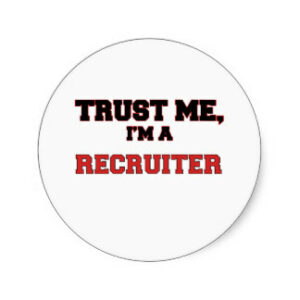
Recruiters talk to far more people who don’t get a job than who do get a job. Even for the exceptionally gifted ones, most people with an opinion of us are going to dislike us over the course of our career.
The only time this isn’t true is when we recruit in a very small niche where there’s time to give extraordinary customer service to a very small group of candidates (and, charge an exceptionally large fee for their services to the client).
I’ve been a recruiter for almost 20 years, and in that time, I’ve disappointed far more people than I’ve helped. That’s the nature of our profession. My job is to pick people on the playground, and that always means someone is picked last.
Time to stop peddling false hope
Despite this, I’m not convinced it has to be this way. My experience with smaller pools of candidates proves that you can improve the hiring experience. It is possible to have candidates who didn’t get a job offer leave with a positive impression.
To do so, we might have to do the unthinkable — I think we have to limit the number of people who apply to a job.
Science tells us that we have to stop peddling false hope to the 98 percent of people who apply and are never going to get the job.
Instead, we have to figure out a way to give them something valuable for not applying.
Measure the Marketing ROI for Recruitment Advertising
“Help Wanted”
Recruitment advertisement evolved from the early years of “Help Wanted” and “Vacancy Available” posters on the streets to ads in newspapers to internet ads. With the birth of the internet and social media, advertising as a whole has grown immensely. But recruitment advertising has changed even more. In fact, the new-age dominance of online recruitment advertising has completely transformed the way recruiters and talent acquisition leaders think about connecting with top talents. The internet gave recruiters new ways to draw bigger audiences than before. 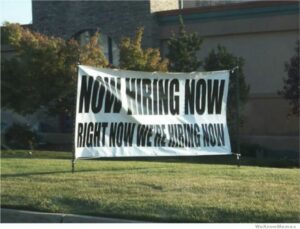
Now, the advertising campaign is a key component of the overall recruitment plan. The major aim of recruitment advertising is still to attract the attention of potential candidates and eventually persuade them to apply for open vacancies, but also to present the company brand. These adverts, together with the job adverts, become the first things that a potential employee sees before deciding on whether or not to apply for a job.
Corporations spend billions of dollars every year on recruiting advertisements, and these ads represent a significant portion of the total money spent from the recruitment budget. If you are working in talent acquisition, you have a budget for branding activities, recruitment tools, an ATS (if you’re lucky) and job boards. And we all know how difficult it is trying to negotiate a decent budget to begin with. But when considering whether to invest in the same resource the following year, the budget holder is probably asking questions like: “What will the return be?” or “Did we get enough candidates for this investment?” Budget holders don’t want to spend money on something that isn’t fruitful.
One key element of being a great marketer is being able to measure your success. And one of the best ways to measure success based on your recruitment marketing efforts is not just tracking and measuring your ROI (return on investment) from it.
What is the Return on Investment?
If you are not familiar with the Return on Investment (ROI), it measures the gain or loss generated against the amount of money invested; it indicates whether a company is using its resources in an efficient manner. ROI in recruitment is all about the value.
Companies often spend thousands of dollars on resources that give them a very small return on their investment (which unfortunately can be none at all). Maybe it’s the job board that they’ve been using for years, the wrong ATS, etc.; they never thought to check the ROI of that source. However, they know that it worked a few years ago and the key account manager from that job board told them, “We are the number one job board in the country.” Their decision to continue with that job board is based on the previous experience but it is not based on any solid data.
Measuring ROI in recruitment is the responsibility of the talent acquisition team. Why? Because it helps them not only justify advertising expenses but also gives them an overview of the activities and resources that actually are working. Some of the common metrics for measuring recruitment advertising are CPH (cost per hire) and CPA (cost per applicant).
CPH (Cost per hire)
Total external media cost/number of hires
Example: $10,000 USD / 10 hires = $1000 USD CPH
CPA (Cost per applicant)
Total external media cost/number of applicants
Example: $10,000 USD / 1000 applicants = $10.00 USD CPA
This will give you an idea about the costs that you are spending on advertising.
Other metrics that you can connect with talent sources are: quality of hire per source – a time taken to fill position per source etc. Understanding what effectively funnels the right candidates into your talent pool will help to make better investment decisions when it comes to your recruitment marketing budget.
Track the Sources
Candidate source tracking should be a priority within every organization, not only because it could improve the candidate pipeline, but it actually saves money. Does your ATS support automated candidate source tracking? It may be worth looking into. It gives companies an advantage when it comes to hiring because now, then can stop asking candidates “Where did you hear about us?” or “Where did you see our advertisement?” because they will already know the answer when the candidate applied.
A few things to ask yourself and your talent acquisition team:
- Are we tracking our social media? Or are we just counting the number of likes on posts?
- Do we know how many visitors clicked on certain URLs? Are we tracking URLs and are they custom to our company and related searched?
- Do we know how many visitors who clicked on the URL were transferred to our career(s) pages but they got stuck in the registration process?
- How many applications have we received from our career(s) portal and from outside sources like LinkedIn or Twitter?
- How many hires did our advertising campaign(s) generate?
If you know the answer to all these questions, great job. Otherwise, what you are you spending your budget on?
How to Track Visitors
If you want to measure the traffic of a careers portal or the success of your branding activities/adverts, the best free tool that is available on the Internet is Google Analytics (www.google.com/analytics/)  combined with UTM codes. (Also known as UTM parameters.)
combined with UTM codes. (Also known as UTM parameters.)
The UTM Campaign URL Builder is here https://ga-dev-tools.appspot.com/campaign-url-builder/ but many other sites can offer you the same tool.
UTM example Link:
http://yourdomain.com/here-is the-name-of-your-page?utm_source=newsletter&utm_medium=banner&utm_campaign=interns
If you are going to post a picture with a URL and you would like to track the success of your content on the web, you can use the link above.
Part of UTM code for Picture on LinkedIn for your internship campaign:
?utm_source=linkedin&utm_medium=picture&utm_campaign=internship
Part of UTM code for Banner on career page for designer role: ?utm_source=careerpage&utm_medium=banner&utm_campaign= designer
Article that you are sharing on Twitter:?utm_source=twitter&utm_medium=social&utm_campaign=article
You can make any combination of these parameters and you can track anything that you post online. You will find lots of information about UTM codes and how to use them on the internet, but here is a quick overview of the five UTM parameters that you can use.
Required Parameters
Campaign Name (utm_campaign)
Code: utm_campaign= for example: summerinterns
The name that allows you to recognize your campaigns.
Campaign Medium (utm_medium)
Code: utm_medium= for example: image
The medium on which your ad is shared, in this case, “image”.
Campaign Source (utm_source)
Code: utm_source= for example: Twitter
The source that sends traffic to your career page.
Optional Parameters
Campaign Term (utm_term)
Code: utm_term= for example: button
The link, button or ad that is involved in tracking.
Campaign Content (utm_content)
Code: utm_content= for example: magazinpage7
The content that you are sharing.
Adding these parameters after the question mark doesn’t affect anything on your page or ruin your links, it helps you to better track your marketing activities and your visitors.
Why UTM codes are your friend
You can track social channels or marketing activities to discover the ones that are bringing you the best value. You can even track the same piece of content across multiple channels, so that you can easily see what happens if you post a picture on LinkedIn and the same one on Twitter, Facebook, Google+ etc. With UTM parameters, you can easily see the channel that worked best for this specific marketing activity. They help you target which areas have the most activity and are giving you the most bang for your buck.
Google Analytics is a great tool that helps to identify the number of visitors to your page and their source. When you are setting up goals, Google Analytics will show you, for example, the number your visitors who apply through your website or perform some specific action. For recruiters, these actions are most commonly set up to record the number of candidate applications.
Targeting your ads
With millions of people online, recruitment ads will be seen by more than just job applicants and qualified candidates. In a market of heterogeneous niches and job seekers, matching the right job ad to the right candidate is very difficult. Thankfully, online recruitment advertising has the ability to solve this problem by enhancing job visibility and candidate targeting.
Targeting in advertising is very effective and when done correctly will result in a much higher ROI. Thanks to that, the ads cost less and yield more appropriate applicants than unfocused ads. Considering the cost, yield, and focus of ads can promote the effectiveness of recruiting processes. This lowers the cost to find high-demand quality talent and limits the use of external resources.
One of the best ad targeting offering is Facebook Ads. You can easily target people not only based on their location and demographics, but also based on interests, behaviors, life events, hobbies, shopping and many other things.
Conclusion
Consider this – if your company has spent $5,000 USD on a job board that provides 1000 visitors yearly based on Google Analytics or any similar tracking tool, and from these 1000 visitors, 50 applied and you have hired only one of them, you can easily calculate that you spent $5,000 USD on one hire. You also notice that every picture you on Twitter (for free) brings you two candidates and one hire every month. Might be time to reinvest and think your process. It’s called RETURN on investment for a reason.
Recruiters Brace for Hurricane Hiring Surge. Here Are 6 Ways to Minimize Disruption
 The 2017 hurricane season doesn’t end until November 30, and yet, without even accounting for Hurricane Maria, we are already facing an economic impact estimated at $290 billion dollars from Harvey and Irma.
The 2017 hurricane season doesn’t end until November 30, and yet, without even accounting for Hurricane Maria, we are already facing an economic impact estimated at $290 billion dollars from Harvey and Irma.
What is destined to be the costliest hurricane season in U.S. history is causing economic disruption across regions dominated by energy, petrochemical production, oil and gas, steel, medical research, aerospace, agriculture and tourism.
Thousands of business have been destroyed, causing an immediate contraction in the local labor markets as tens of thousands of Americans lost their jobs or couldn’t get to work unless they worked remotely. With almost 1 million cars destroyed in Houston alone, the area’s lack of mass transit has made it even tougher for people to commute as businesses reopen.
Many utility and electrical grid-oriented companies were severely damaged, making it difficult to restore power in critical areas like hospitals and nursing homes. This, in turn, intensified pressure on Uninterruptible Power Supply (UPS) services to meet increased demand.
While Harvey and Irma caused immeasurable human suffering, many experts concur that the long-run economic impact of these kinds of disasters is to actually “lift economic activity” as rebuilding begins.
Hurricane hiring surge expected in key industries
Hundreds of thousands of structures were impacted by these storms, requiring enormous cleanup, demolition, and reconstruction efforts. As infrastructure, businesses, and homes are rebuilt and millions of motor vehicles replaced, we can expect hiring surges across a broad range of industries including:
- Waste management and environmental companies supporting demolition efforts and clearing out debris.
- Insurance firms servicing commercial and residential customers and scheduling construction projects.
- Construction companies setting up extra offices and sites; builders and crews buying materials boost building materials, trucking, and construction equipment industries as well as retailers like The Home Depot and Lowe’s.
- Furniture and household appliance industries ramping up to furnish new homes and offices.
- Data Centers staffing up as companies seek more secure locations to house data made vulnerable by lack of power or other hurricane-related damage.
- Car dealers, used and new.
Florida, Texas, and Louisiana will see years of rebuilding and face difficulties keeping up with labor demands.
Here’s something to keep in mind: Recruiters already dealing with tight labor markets in general must now reckon with the country’s persistent shortage of electricians, plumbers, HVAC techs and any kind of construction tradesperson with skills vital for disaster recovery. Trades should anticipate having order backlogs for the foreseeable future unless they can quickly staff up and hire more crews.
6 keys to minimizing disruption
From Houston to Miami and beyond, there will be more work and stress ahead for HR/Talent Acquisition teams working with areas in Texas and the Southeast pounded by Harvey and Irma.
Expect higher requisition loads in the months ahead as the labor market reshuffles. And, be ready to deal with higher pay demands to win candidates as the labor market gets even tighter.
In short, you need to start staffing up your team now to replace all that is lost and meet increased labor demand.
Recruiting teams should consider the following steps to minimize disruption:
- Scope out market changes –Re-assess your candidate pools and identify what has changed. In other words, determine the viability of your candidate inventory.
- Re-assess your priorities — Work with your hiring managers, customers or operations team to learn about their new openings and re-assess their short-term and long-term priorities. Remember, the labor markets will have some degree of reshuffling going on.
- Evaluate the current candidate pool — Determine your candidate shortages when looking at new orders/requisitions and aggressively market opportunities to land the candidates required.
- Get outside your market — Look outside the local market at renewable candidate pools. As local labor tightens, imported experienced talent, Veterans or candidates from colleges and trade schools may be more willing to relocate into hard-hit areas.
- Are remote workers an option? — Re-visit existing positions and determine if some could be done remotely. Remote talent can help offset the stress of finding the right talent in a very tight labor market as well as keep labor costs down too.
- Take care of your own — Ensure you are taking care of current employees. As more job positions open up elsewhere, employees may have an eye out for their next career move. Retention strategies are critical during this time to help you keep the talent you already have.
While the outlook for the rest of the 2017 hurricane season remains unknown, you must hope for the best and plan for the worst.
Remember: Recruiters MUST take disaster planning seriously, whether it’s for a hurricane or anything else. It’s crucial for all talent acquisition professionals to have a well thought out first responder plan in place to help facilitate their region’s recovery.
















